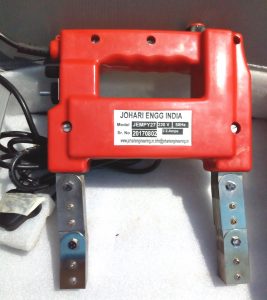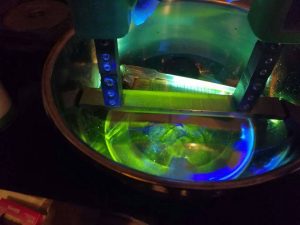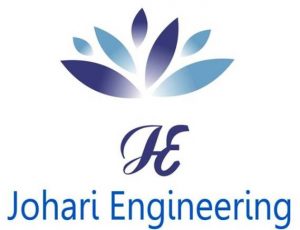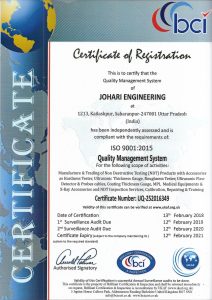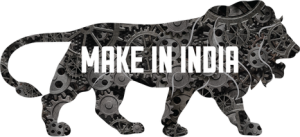Magnetic Particles Inspectionचुंबकीय कण निरीक्षण
Basic Knowledge of Crack Detection with Magnetic Particles चुंबकीय कणों के साथ क्रैक डिटेक्शन का बुनियादी ज्ञान
During the production of steel (casting), during the processing (rolling, forging, welding) and also 
 during the utilization of steel components (bending and tensile loads) cracks can occur. Most often the crack formation begins at the surface and then the crack grows into the material due to stress concentrations at the crack tip. Finally,
during the utilization of steel components (bending and tensile loads) cracks can occur. Most often the crack formation begins at the surface and then the crack grows into the material due to stress concentrations at the crack tip. Finally,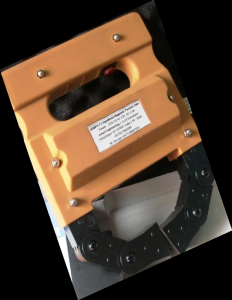 this can lead to a fatigue fracture of the component.
this can lead to a fatigue fracture of the component.
Therefore cracks are the most crucial defect type and must be eliminated by grinding out the crack or scrapping the complete component. The most sensitive method for the detection of surface cracks in ferromagnetic parts is magnetic particle testing (MT).
प्रसंस्करण (रोलिंग, फोर्जिंग, वेल्डिंग) के दौरान और इस्पात घटकों (झुकने और तन्यता भार) के उपयोग के दौरान स्टील (कास्टिंग) के उत्पादन के दौरान, दरार हो सकते हैं। अक्सर दरार संरचना सतह पर शुरू होती है और फिर दरार टंक पर तनाव सांद्रता के कारण सामग्री में बढ़ जाती है। अंत में, यह घटक का एक थकान फ्रैक्चर पैदा कर सकता है।
इसलिए दरारें सबसे महत्वपूर्ण दोष प्रकार हैं और दरार को पीसकर या संपूर्ण घटक को समाप्त करके समाप्त कर दिया जाना चाहिए। फेरामैग्नेटिक भागों में सतह की दरारों का पता लगाने के लिए सबसे संवेदनशील तरीका चुंबकीय कण परीक्षण (एमटी) है।
- Safety relevant components in the automotive industry. Those are steering, axle and motor components in the state of half finished forged or cast products or in the final machined state.Welds on pressure vessels and pipelines
Download
DEUTROPULS Hand Held Yoke KARL DEUTSCH Germany
FLUXA Inspection Media for MPI KARL DEUTSCH Germany
UV LED COMBI LAMPMains and Battery Operated Portable Lamp KARL DEUTSCH Germany
P 34 E 06_08P 90 e 07_16 MPI Chem
P 3815 e 11_13 UV Lamp
JEMPY 27
